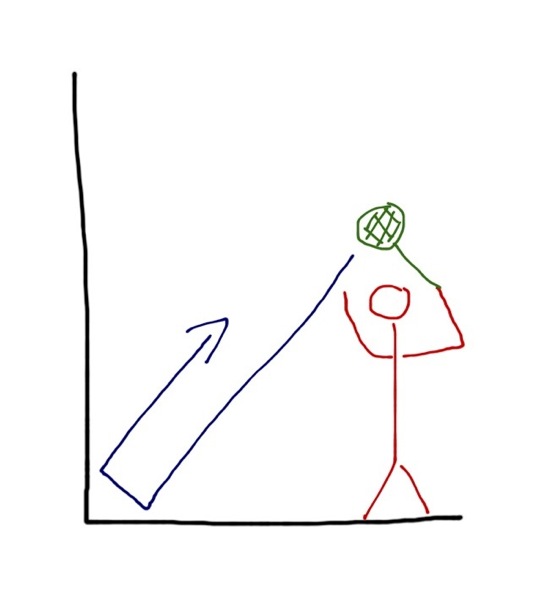Give Yourself a Heart-Attack for Better Serves
 Saturday, November 19, 2011 at 06:25PM
Saturday, November 19, 2011 at 06:25PM  CAtennis
CAtennis  OK, no, not really! This would be a terrible idea and you are advised against it. However, on a tennis-note, have you ever wondered why your serves always break down in a match but you're virtual maestro in practice? Well, let's think about it for a second...when do you practice your serves? In the middle of the workout? At the beginning? The end? Do you sprinkle serves throughout your practice? Of course not. If you're like the majority of players taking lessons, you will spend 52.5 minutes working on your ground-strokes and then finish your workout with a couple of minutes of serves. Even if you are extremely motivated and practice serves for 20-30 minutes at a time, you could still use some tweaking in your method in order to get the most out of your serves in a match.
OK, no, not really! This would be a terrible idea and you are advised against it. However, on a tennis-note, have you ever wondered why your serves always break down in a match but you're virtual maestro in practice? Well, let's think about it for a second...when do you practice your serves? In the middle of the workout? At the beginning? The end? Do you sprinkle serves throughout your practice? Of course not. If you're like the majority of players taking lessons, you will spend 52.5 minutes working on your ground-strokes and then finish your workout with a couple of minutes of serves. Even if you are extremely motivated and practice serves for 20-30 minutes at a time, you could still use some tweaking in your method in order to get the most out of your serves in a match.
Here's the deal: when you play points, you are likely to move... sometimes a lot. The movement takes a physical toll on your body. You will breathe harder and maybe even break a sweat. To keep up with a higher demand of your muscles and lungs, your heart will start beating more vigorously in order to supply more oxygenated blood and glucose (i.e. energy) to your cells (at least, this is what we remember from that one day we stayed awake during high-school Biology class). To summarize, when you're actually playing points your heart works hard(er).
Conversely, when you're working on your serves in practice, you are doing it at a relatively resting heart rate. You hit a serve... you walk back to baseline... you think about your motion... you bounce the ball... wait for an airplane to pass; etc. If you were getting ready for serving at a County Fair, this is the type of exercise that you would require. However, when you're playing a match, your opponent has something to say about the state of your cardiovascular system when you're executing the motion. Your opponent doesn't toss the ball for you or tell you where to hit the serve but if he's made you play a long, hard point beforehand, he will have a say regarding the quality of your serve... unless, of course, you practice hitting serves with a slightly elevated heart rate thereby training your system to respond better to stressful situations.
With this in mind, if you are committed to improving your serve under pressure, try this next time you work on your serves: incorporate some form of physical exercise between serves. For example, hit a serve and do 5 burpees; hit a serve and do 5 kangaroo jumps; hit two serves and then shadow-swing 8 side-to-sides; hit a serve a sprint to the service line and back; etc. The key is to train yourself to hit serves when you're tired; when you're winded; when your brain lacks sufficient oxygen to make smart decisions. By giving yourself these mini heart-attacks, you will be a lot more prepared for dealing with serving at a key point while your heart is pounding out of your chest. This skill is particularly important when the rest time between points is not sufficient to bring your heart rate back down to normal levels - which tends to happen quite often the higher level you play.




